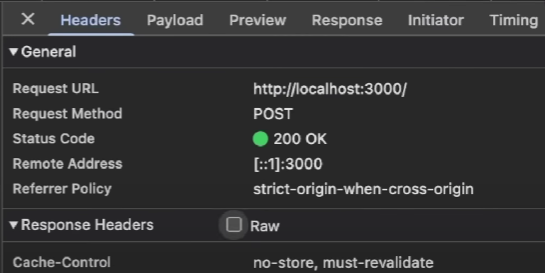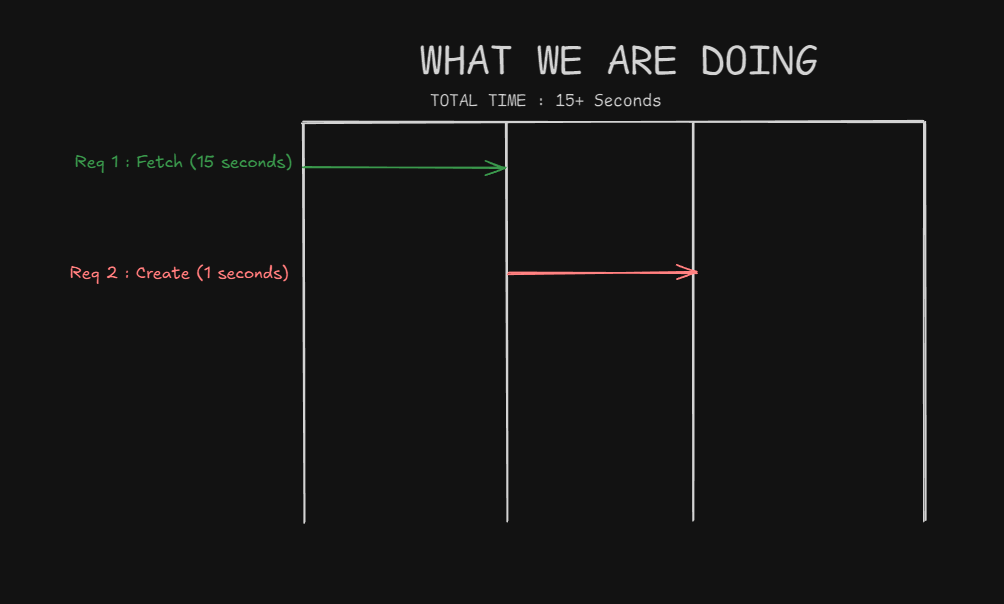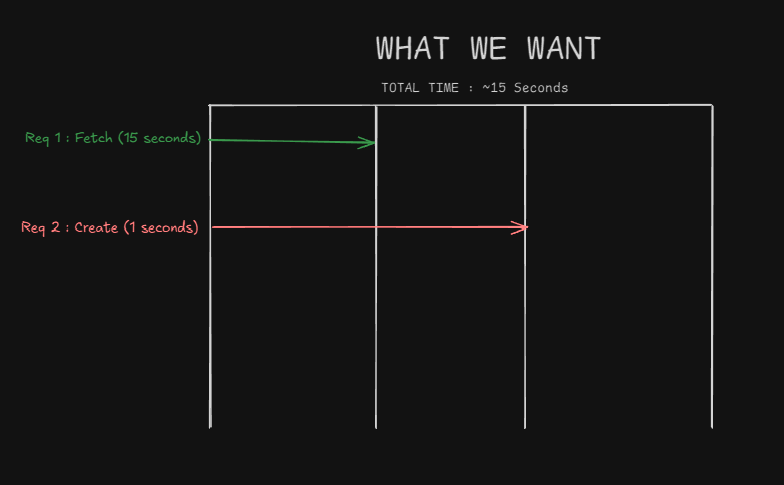The typical vulnerability
Fetching data in Next. Js feels pretty straightforward foe the first time.
Just use async await in react server component and good to go.
If user authenticate required await headers, cookies or session as you required.
Here's what flow looks like :
Create an async function, grab some data with Prisma (suppose all the TODO from DB), call it inside your RSC (react server component), and you're done, right?
Unfortunately, NO It's not simple actually. What you have done is created a POST request. Not GET but a POST request because that's how Next. Js works under the hood.
So what's the issue with POST request? The issue is -
- It blocks parallelism
- It doesn't support caching
- Bypass your authenticate
- And also create a security vulnerability
The problem
Server Actions for Data Fetching
Let's start with a common example. I've built a simple todo application where users can create todos that render below a form.
Here's what the typical (but problematic) implementation looks like:
// page.tsx
'use client'
export default function Home() {
const [todos, setTodos] = useState([])
useEffect(() => {
getTodos().then(setTodos)
}, [])
// Rest of component...
}// actions.ts
'use server'
export async function getTodos() {
const todos = await prisma.todo.findMany()
return todos
}This works, but it creates several critical problems:
Problem 1 : POST Requests for Data Fetching
When you use server actions to fetch data, you're creating POST requests instead of GET requests.
I'd say open your browser tab and fetch something using server action and the request will be shown as POST Request.

Problem 2 : No Parallelism
The bigger issue is that POST requests run successively, not in parallel. If I we suppose request takes 15-second for the data fetching function and try to create a new todo while data is loading, the creation request waits for the fetch to complete first. This destroys performance.
Here's what happens:
- Request 1 (fetch): 15 seconds
- Request 2 (create): Waits for Request 1 to finish, then executes
- Total time: 15+ seconds

What we want:
- Request 1 (fetch): 15 seconds
- Request 2 (create): 0.01 seconds (runs in parallel)
- Total time: ~15 seconds

Solution 1: Server Components with Streaming
The first step is moving data fetching to server components. Server components let you fetch data and render parts of your UI on the server, with optional caching and streaming.
Example :
// page.tsx (Server Component)
import { Suspense } from 'react'
import TodoForm from './components/todo-form'
import TodoList from './components/todo-list'
export default function Home() {
return (
<div>
<TodoForm />
<Suspense fallback={<div>Loading...</div>}>
<TodoList />
</Suspense>
</div>
)
}// components/todo-form.tsx (Client Component)
'use client'
export default function TodoForm() {
// Form logic with client-side validation
// and server action for mutations
}// components/todo-list.tsx (Server Component)
import prisma from '@/lib/prisma'
async function getTodos() {
return await prisma.todo.findMany()
}
export default async function TodoList() {
const todos = await getTodos()
return (
<div>
{todos.map(todo => (
<div key={todo.id}>
<h3>{todo.title}</h3>
<p>{todo.content}</p>
</div>
))}
</div>
)
}This approach:
- Uses GET requests (implicit in server components)
- Enables parallel request execution
- Provides streaming with Suspense boundaries
- Maintains proper separation between server and client code
The Security Problem: Session Verification
Now let's add authentication. A common mistake is verifying sessions only at the page level:
// page.tsx
export default async function Home() {
const { getUser } = getServerSession()
const user = await getUser()
if (!user) {
redirect('/api/auth/login')
}
return (
// Component JSX
)
}This seems secure, but it creates a critical vulnerability.
What happens when you extract the TodoList component for reuse?
Suppose you created a /test route and imported the TodoList component and forgot to do validation there or If another developer creates a new route and imports your component:
// app/test/page.tsx
import TodoList from '@/components/todo-list'
export default function TestPage() {
return <TodoList /> // No session verification!
}Visiting /test in an incognito browser will display the todos without authentication.
The session check only exists at the page level, not where the data is actually fetched.
Solution 2: Data Access Layer
The Next.js documentation recommends creating a data access layer to centralize data requests and authorization logic.
Here's the implementation:
// app/data/user/require-user.ts
import 'server-only'
import { redirect } from 'next/navigation'
import { cache } from 'react'
export const requireUser = cache(async () => {
const { getUser } = getServerSession()
const user = await getUser()
if (!user) {
redirect('/api/auth/login')
}
return user
})// app/data/todo/get-todos.ts
import 'server-only'
import prisma from '@/lib/prisma'
import { requireUser } from '../user/require-user'
export async function getTodos() {
await requireUser() // Verify session before fetching data
return await prisma.todo.findMany()
}\
// components/todo-list.tsx
import { getTodos } from '@/app/data/todo/get-todos'
export default async function TodoList() {
const todos = await getTodos()
return (
<div>
{todos.map(todo => (
<div key={todo.id}>
<h3>{todo.title}</h3>
<p>{todo.content}</p>
</div>
))}
</div>
)
}Benefits of the Data Access Layer
-
Single Source of Truth: All data-related code is centralized in one place, making updates and debugging easier.
-
Natural Security Checkpoint: Session verification happens where data is fetched, preventing accidental data leaks when components are reused.
-
Organized Structure: Create folders for different data types:
app/data/ ├── user/ │ ├── require-user.ts │ ├── get-user.ts │ └── get-all-users.ts └── todo/ ├── get-todos.ts ├── get-todo.ts └── get-admin-todos.ts
Performance Optimization: React Cache
Notice the cache() function wrapping our requireUser function.
This is crucial for performance.
Imagine a dashboard that needs multiple data sources:
- Get subscribers
- Get total customers
- Get revenue for last 30 days
- Get recent orders
- And 6 more data points
Without caching, requireUser() would run 10 times for a single page render. With React's cache() function, it runs once and caches the result for that render pass.
The cache is scoped to a single server-side render and doesn't persist between page navigations, making it perfect for this use case.
Security Enhancement: Server-Only
Add the server-only package to prevent accidental client-side usage:
import 'server-only'
// This import ensures the function only runs on the server
// and throws a build-time error if imported in client componentsThis is different from the 'use server' directive:
'use server': Creates server actions callable from both server and client'server-only': Ensures code only executes on the server, throws errors otherwise
Summary
- Use Server Components for data fetching to get proper GET requests and enable parallelism
- Implement a Data Access Layer to centralize data logic and security checks
- Verify Sessions at the Data Layer not just at page level to prevent security vulnerabilities
- Use React's cache() Function to optimize repeated authentication checks
- Add server-only Imports to prevent accidental client-side usage
- Use Suspense Boundaries for streaming and better user experience
Thanks for reading ! Follow me on x its @ramxcodes
